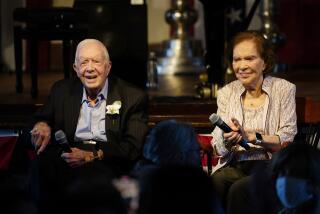Long-term care uncertainty is a growing issue
- Share via
The cost of long-term care is the big health insurance uncertainty for Americans 65 and older.
How will they pay for long-term care? The biggest shock for people entering the Medicare system is learning that it won’t pay for custodial care in a nursing home.
Let’s say you are 90 and you fall and break a hip. You go to the hospital and Medicare pays for your hip replacement. You go to a rehabilitation nursing facility and Medicare pays the full bill for the first 20 days and for all but a co-pay for the next 80 days.
But let’s say you are 90 and start suffering from dementia. You forget to turn off the stove and almost burn down your house, or you can’t bathe yourself anymore.
Medicare was designed to pay for acute illnesses and medical treatments. It won’t pay for someone to feed you or help you bathe or dress. Unless you have someone to care for you, you go into a nursing home, at about $70,000 a year, and pay for it yourself. Only when you spend all but your last few thousand do you qualify for Medicaid (known as Medi-Cal in California), which will then pay the nursing home bills.
The rules are incredibly complex; one consumer advocacy group has a 12-page flowchart for lawyers to use to help their clients qualify for help. For example, you can give away money to your spouse or children to become poor enough to go on Medicaid, but you have to get rid of it five years before you enter a nursing home.
About 1,384,000 people are living in U.S. nursing homes, down from 1,456,000 a decade ago. Old people are somewhat healthier now, and more are staying in the community. The average nursing home resident is a woman in her late 80s who needs help with four of the six basic activities of daily living: using the toilet, bathing, dressing, eating, getting in and out of bed, and moving around the house.
If you are in a retirement community or assisted living facility, you have to be somewhat self-sufficient. But if you become bed-ridden or need help with a lot of the activities of daily living, you will wind up in a nursing home — unless you have a partner, spouse, friend or children who will care for you. Millions of people are living in the community aided by some of the 52 million Americans who are unpaid caregivers.
Will there be enough of these loving volunteers in the future to care for the growing legions of aging boomers?
— Bob Rosenblatt






